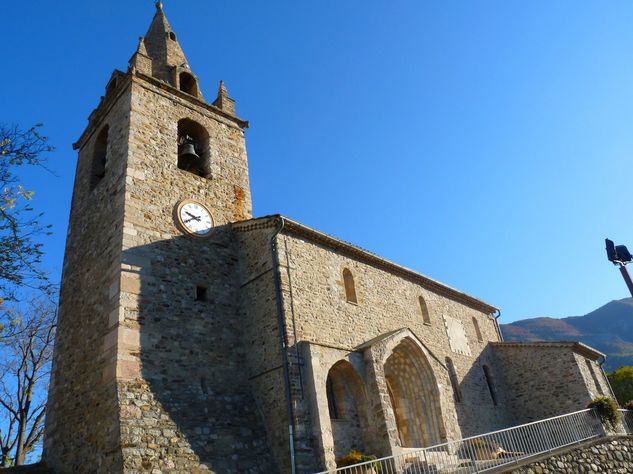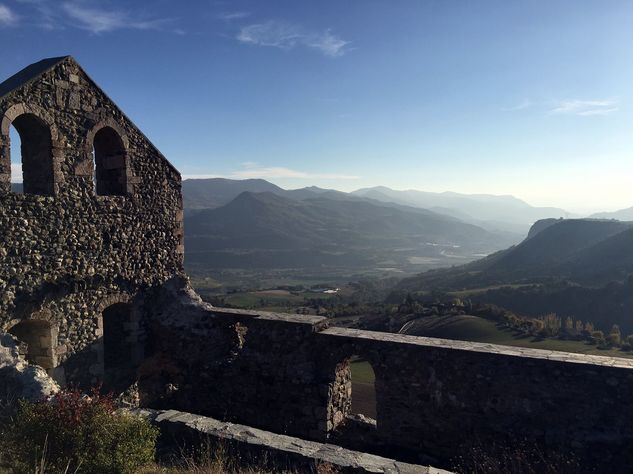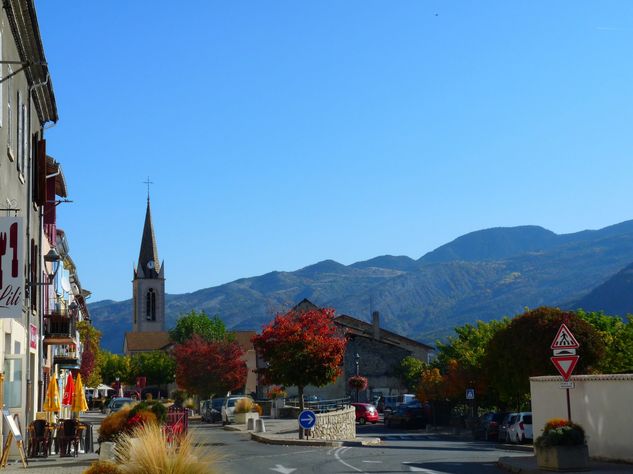Heritage of our villages
Gap Tallard Vallées: the heart of the Southern Alps
17 communes make up the territory of Gap Tallard Vallées.
Each village brings to our territory its originality, its diversity...go and discover this perhaps unknown treasure, which is the small heritage of our villages.
17 communes compose the territory of Gap Tallard Valleys. Each village brings to our territory its originality, its diversity ... go to the discovery of this treasure perhaps unknown, which is the small patrimony of our villages.
To the south, Claret and Curbans are the most Provencal of our villages where we find, as for much of the territory, many orchards bordering the Durance. Close to Tallard, medieval town, the villages of Lettret, Châteauvieux and Jarjayesoffer vines and sunny slopes, with exceptional views.
From Gap - taking a bit of "height" - the villages of La Freissinouse, Pelleautier, Neffes and Sigoyer lead us to the foot of the mythical mountain of Céüse. En route, lake, old wash houses and traditional houses will seduce you. At the Col des Guérins is the start of the climbing routes of Céüse, internationally renowned. Towards the Foureyssasse pass, the communes of Fouillouse and Lardier-et-Valença reveal a generous nature between vast fields, expanses of forests and breathtaking views. In the next valley, the villages of Barcillonnetteand Esparron are near the tray of Peyssier and its lake altitude, destination of many hikers. Finally, back in the valley of the Durance, Vitrolles and La Saulce face Pic de Crigne, emblematic mountain of the south of the territory and fully classified Natura 2000 area.



Saint-Pierre de Curbans Church
At the foot of the village, surrounded by a cemetery, in a place called "le Claux", is the 11th century church of Saint-Pierre, which has been redesigned over the centuries and is listed in the supplementary inventory of historical monuments.
It was the former parish church.
Its geminate bay on the south façade, its four-bay barrel-vaulted nave, its low, arched apse and its elevation certify its medieval origin with a primitive Romanesque style, probably from the 12th century (source DRAC PACA), reworked over the centuries.
The walls are built in a regular pattern on the chevet, in rubble and pebbles elsewhere.
It is lit only by three small stained glass windows on the eastern façade.
The Saint-Laurent Chapel of Sigoyer
ue-Provencal style chapel is all that remains of a priory founded by the Abbey St Michel de la Cluse (Piedmont). From the 15th to the 18th century, the Priory was held by the Order of Malta. Altar in painted wood, statues, paintings, pattern on the ceiling of the choir are to see inside, If you want to go in the ruins of the old village located in Vière, abandoned around 1850 and rehabilitated between 2006 and 2007; take the old road starting from the place of the town hall (now reserved for pedestrians): after 1km of marked path, secure, you will arrive at the old village.
- - - - -
Since 2021, the village of Sigoyer has been labeled as "Commune touristique".
The parish church of Saint-Thomas-Saint-Restitut of Jarjayes
The parish church of Saint-Pierre was the oldest church in the village of Jarjayes.
The first church of Saint-Pierre, located on the site of the current cemetery, already existed in 1118. It was the first parish church and it remained so even after the transfer of the village to Tréchâtel. During the religion wars, the Protestants ransacked it.
In 1860, its stones were used to build a chapel on its site to perpetuate its memory. It is the burial place of the Ventavon family.
After the destruction of the church of Saint Pierre in the 15th century, the church of Saint Thomas -situated on the edge of the rock of Tréchâtel- replaced it.
Built in the old village in the 12th century, it was damaged during the religious wars in 1588 by François de Bonne de Lesdiguières then rebuilt in the 17th century. Following this reconstruction it became the church of Saint-Thomas-Saint-Restitut.
Currently the gate at its entrance closes the church to the public but its ruin still overlooks the heights of the village.
⇒ Only a few minutes' walk from the village, don't hesitate to climb up to its remains: a magnificent panoramic view as well as an orientation table await you.
The hamlet of Ville Vieille in Châteauvieux
In the hamlet of Ville Vieille, dominating Tallard, are the remains of a considerable fortification. The whole summit of the mountain on which the hamlet is built is surrounded by a vast enclosure of circular walls. Some parts of this enclosure are still 6 or 7 meters high. The oldest parts date from the 11th century. Next to these ruins there was a small chapel, which has now been levelled. This is all that remains of a castle that once belonged to the bishops of Gap.
Translated from Châteauvieux official website





